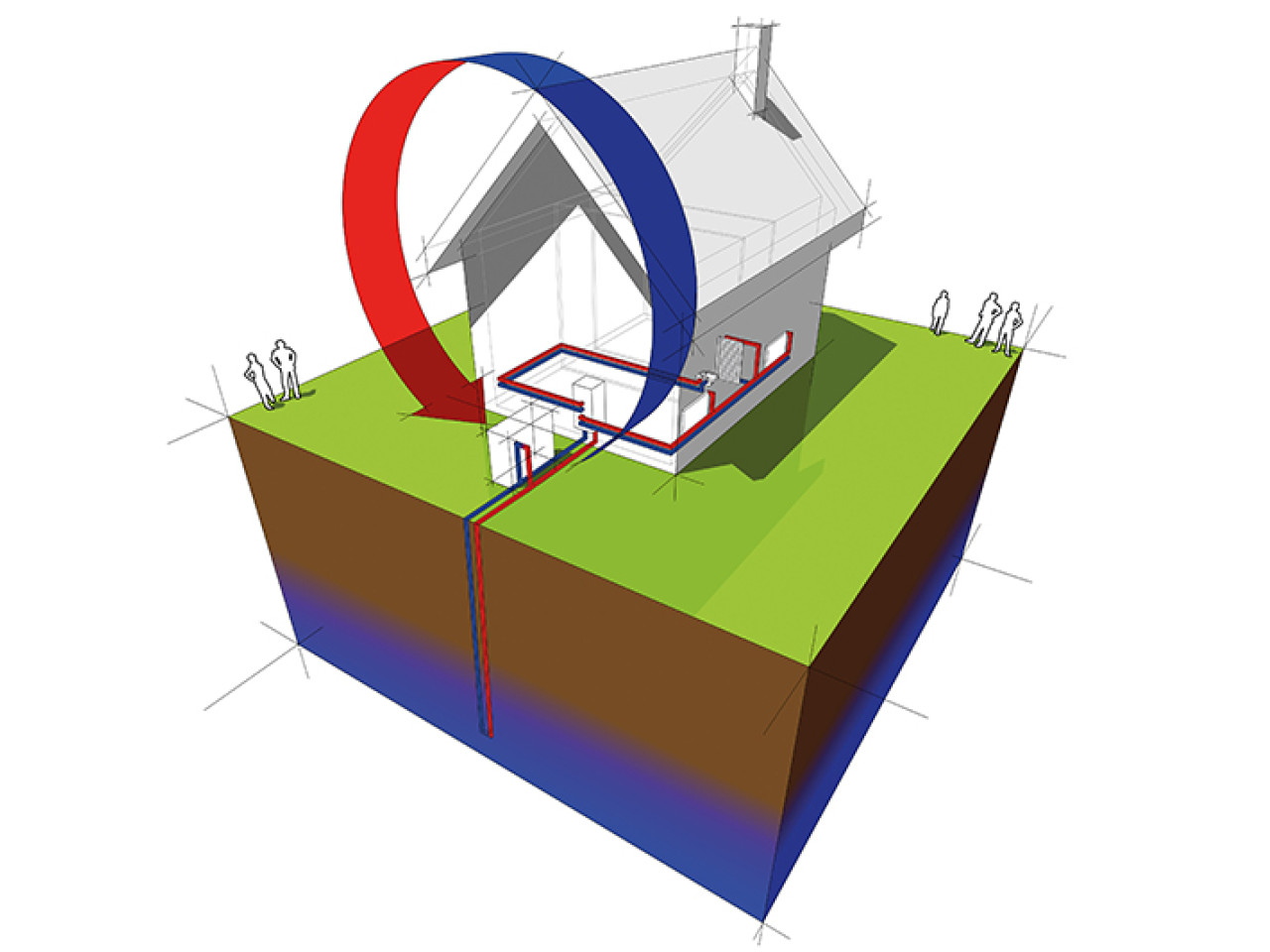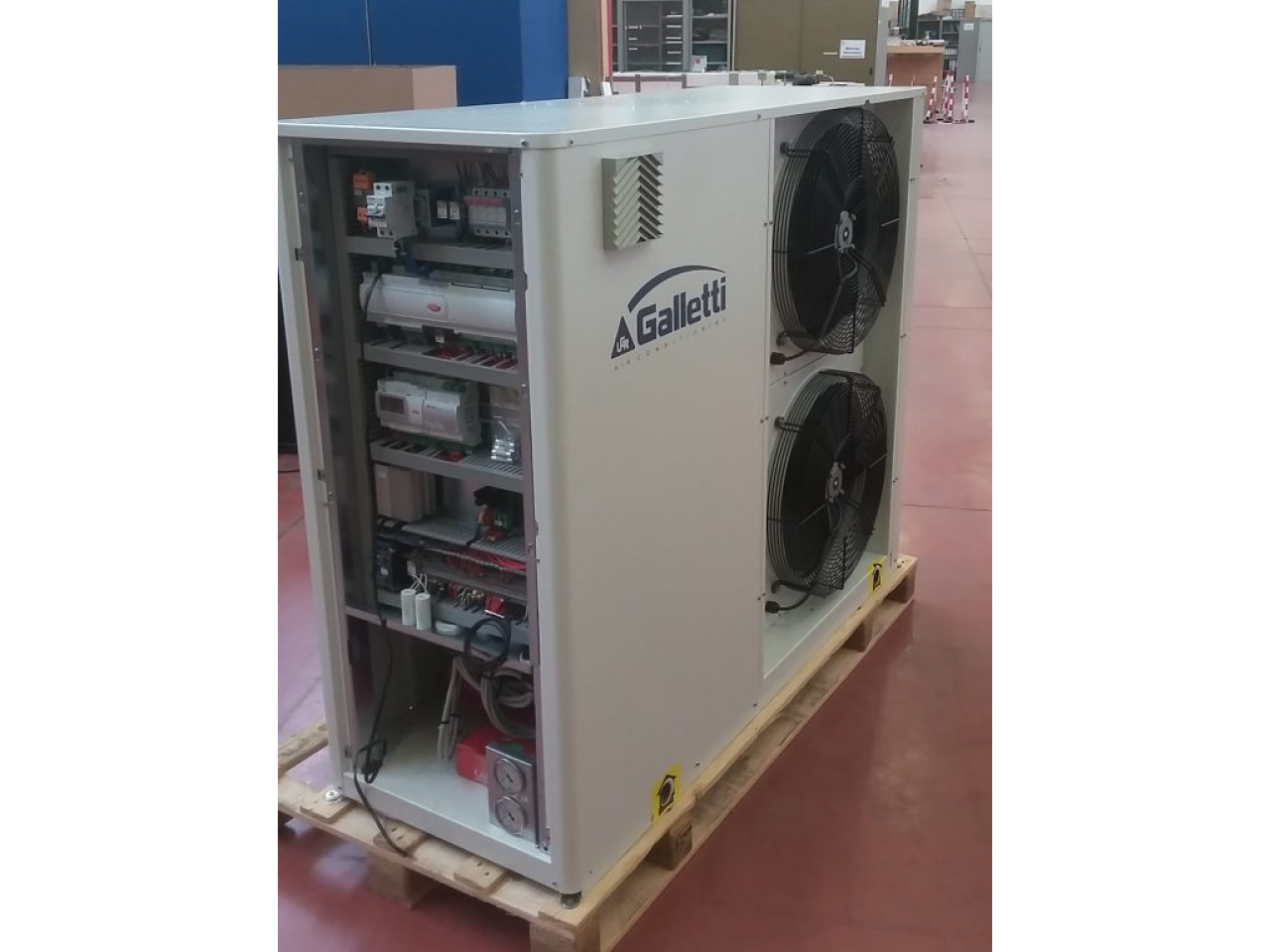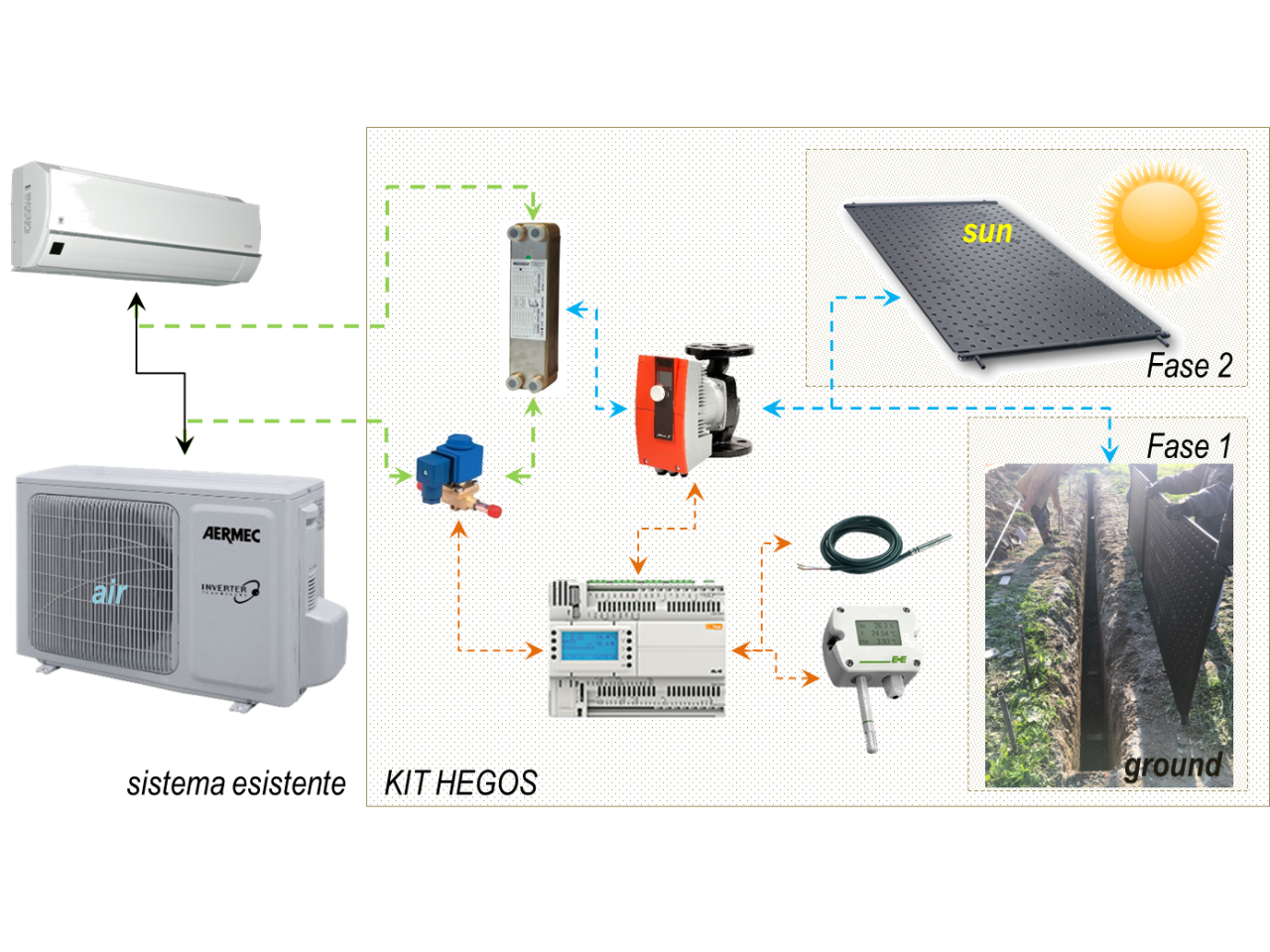HEGOS allowed to test invertible heat pumps able to operate according to an integrated multi-source energy harvesting approach. A prototype was developed aimed at commuting single-source air heat pumps into dual-source pumps and a pilot plant to test invertible heat pumps equipped with a double external heat exchanger able to exchange heat with two complementary thermal sources. The system allows the study of the energy performance of heat pumps in dynamic operating mode by means of "Hardware-in-the-loop" tests. The use of complementary thermal sources (air, water, ground, thermal waste) characterized by different thermal levels and a different seasonal stability maximizes system performance, both in heating and cooling mode, eliminates the use of defrost cycles during the winter season, reduces operating costs and increases the share of renewable energy used.
 HEGOS: Project co-funded by the European Regional Development Fund
HEGOS: Project co-funded by the European Regional Development Fund
The dual-source heat pump chooses with which external source to interact according to the weather conditions. The possibility of using the ground as an alternative to outdoor air allows stabilizing the energy performance of the heat pump during the hottest or coldest days of the year. Thanks to the geothermal heat source, in winter the activation of the defrost cycles can be at all eliminated, to the full advantage of the seasonal efficiency of the system.
The dual-source heat pump can be used for both residential and commercial space heating or cooling. It is an excellent solution for those cases in which the building to be air-conditioned has highly unbalanced thermal loads and thermal losses, between summer and winter, respectively. The dual-source heat pump is also suitable for upgrading existing geothermal systems where the geothermal field had become undersized as a result of the increase in thermal loads or thermal losses during system lifetime.
 Dual-source heat pump with two external heat exchangers
Dual-source heat pump with two external heat exchangers
CASE A: Space heating by a modified heat pump (conversion kit). CASE B: "Native" dual-source heat pump for space heating or cooling of a one-story house located in Bologna
CASE A Using the kit, an air to air heat pump with inverter compressor (2.5 kW) was coupled to a geothermal loop made by a plastic heat exchanger installed in the trench. The heat-pump, used to heat a studio apartment during the winter of 2018, has ensured a greater stability of the indoor temperature (and thermal comfort) even in the occurrence of long periods characterized by a low outdoor air temperature (T <-5 ° C), thanks to a reduced use of defrost cycles, with an increase in the order of 0.5-1 points of seasonal energy efficiency compared to the unmodified heat pump. CASE B The "native" dual-sore heat pump has been tested in a one-story house located in Bologna characterized by winter thermal losses greater than the summer thermal loads. The use of dual-source heat pump allowed to avoid the drop in the temperature of the soil that would have occurred in the long run in the case of using a geothermal pump (single source) and therefore the decrease in the energy performance of the system over time. If compared to an air heat pump, the dual-source guarantees an increase in annual energy performance of the order of 20%. The heat pump also allows to reduce the length of the geothermal loop up to a maximum of 30% compared to the case of a geothermal only heat pump.
CIDEA UniPR, CIRI-EC UniBO, TekneHub UniFE, EN&TECH UniMORE, CNA INNOVAZIONE GALLETTI SpA., GEO-NET srl
The double-source heat pump can be conveniently produced at industrial level (eg Galletti SpA). The potential users of the conversion kit, on the other hand, are the qualified installers, possibly involved in the refurbishment of existing heat pump systems.
 Layout del kit di trasformazione
Layout del kit di trasformazione

